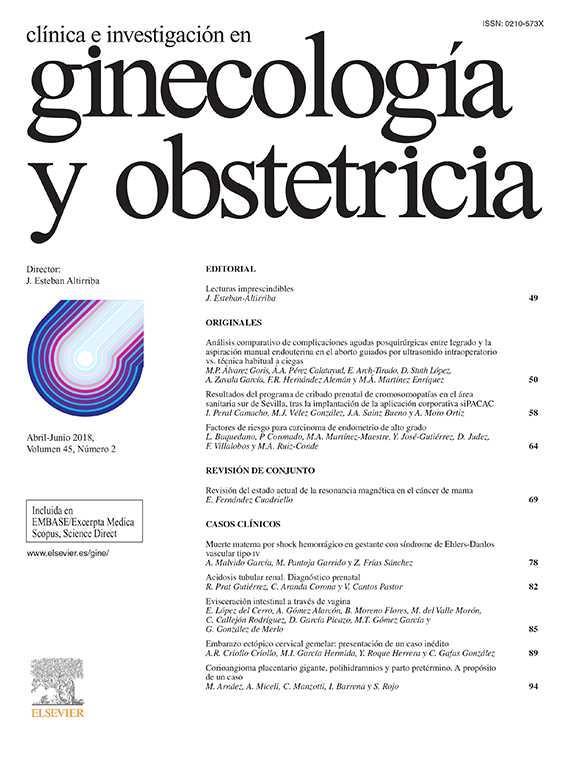Analizar durante la última década del siglo XX frente a la década anterior las tendencias emergentes en los parámetros de natalidad y mortalidad del recién nacido en las Islas Baleares.
Material y métodosEstudio restrospectivo basado en datos obtenidos del Instituto de Estadística Nacional y Balear y del registro del Hospital Son Dureta, referentes a natalidad y mortalidad perinatal en reciénnacidos de al menos 28 semanas o peso igual o superior a 1.000 g.
Durante el período 1990–1999, se determinaron también dichas tasas en los recién nacidos con un peso de 500 a 999 g en el Hospital Son Dureta.
ResultadosLa comparación entre la primera y segunda década pone de relieve una clara disminución en los últimos 10 años de las tasas por 1.000 de mortalidad en el conjunto de la comunidad: la mortalidadfetal tardía (MFT) pasa de 8,53 a 3,83 (p = 0,45),la mortalidad neonatal precoz (MNP) de 5,85 a 2,39 (p = 0,36) y la mortalidad perinatal (MP) de 13,17 a6,26 (p = 0,48).
Considerando el conjunto de la última década en el Hospital Son Dureta y en los demás centros,las tasas de MFT son superiores en el primero (4,6 frente a 3,4),mientras que las de MNP son inferiores (1,7 frente a 3,1) y las tasas de MP son similares (6,3 frente a 6,6).
Entre 213 recién nacidos de peso inferior a 1.000 g, 75 nacieron muertos (352/1.000),56 fallecieron en los primeros 6 días de vida (406/1.000) y 9(65/1.000) murieron entre los días 7 y 27.
ConclusionesEntre la penúltima y la última década del siglo XX,la mortalidad fetal tardía y neonatal precoz disminuyeron en más del 50%,con lo que se logró superar ya en 1997 los logros de los países más avanzados en este campo.
To analyse emerging trends in birth and death rates in the last decade of the 20th century, in comparison with the previous decade.
Material and methodsA retrospective study base on data obtained from both the National and Balearic Institute of Stadistics and the register of Son Dureta Hospital with reference to birth-rates and perinatal mortality in new-born infants of at least 28 weeks gestation, or a birthweight equal to or greater than 1.000 g.
The same information was obtained for new-born infants with a brithweight of 500-900 g in Son Dureta Hospital, during the period 1990-1999.
ResultsComparison between the first and second decade highlights a marked diminution of the levels of mortality per thousand in the Islands during the last 10 years: late foetal mortality changes from 8.53 to 3.83 (p = 0.45), early neonatal mortality from 5.85 to 2.39 (p = 0.36), and perinatal mortality from 13 to 6.26 (p = 0.48).
Considered as a whole, during the last decade the levels of late foetal mortality are greater in Son Dure-ta Hospital than in other centres (4.6 vs 3.4), whereas early neonatal mortality rates are lower (1.7 vs 3.1) and perinatal mortality rates are similar (6.3 vs 6.6).
Of 213 new-born infants with a birthweight of less than 1.000 g, 75 were stillborn (352 per 1.000), 56 died during the first 6 days of life (406 per 1.000), and 9 (65 per 1.000) between days 7 and 27.
ConclusionsBetween the penultimate and ultimate decade of the 20th century, stillbirth and early neonatal mortality have decreased by more than 50%, with the result that in 1997 the mortality rates in the Balea-ric Islands were even better than in countries more advances in this field.






